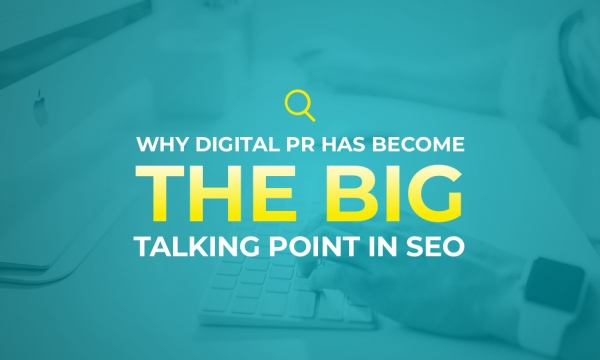Want to create media buzz from a survey? Find out how to plan, execute and analyse the data from a PR survey to get the best bang for your buck.
How to grab headlines and links with your next PR survey
Surveys are a great way to get your brand mentioned in the media – not to mention gaining authoritative backlinks to boost your SEO performance.
But how do you get the maximum impact from your survey, ensuring that it will give you the insight and the stories that are going to grab the attention of journalists? What are the key elements when it comes to a PR survey that makes the headlines?
Making a newsworthy headline

Your headline is probably the most important part of a PR survey. It will lead the story and will need to instantly grab journalists’ attention.
Think about why someone might want to read an article based on your survey – you may need to think laterally here.
For example, a company that makes parts for bathroom furniture might conduct a survey to find out the most popular songs to sing in the shower. It may not be a subject directly related to its services, but it has more widespread appeal.
There’s no exact science to creating an effective headline, but here are some tips that might be useful:
Subvert expectations
Lead with statistics that run contrary to people’s expectations.
If there’s a prevailing stereotype about a particular issue, demographic or behaviour – your survey should subvert that expectation.
For example, if there’s a preconception that:
- Young people spend more time on social media than their parents.
But your survey actually finds:
- Older generations are more likely to be active social users than young people.
This would be surprising enough to be newsworthy – confirming a bias is far less likely to be.
Be reactive
Being reactive to trending news stories can help give your survey a hook.
Imagine there’s been a new study that suggests people are spending less on holidays due to rising flight costs.
A UK staycation brand could run a timely survey in response to find out the destinations people are choosing to visit instead – providing a follow-up to a story that’s already been deemed newsworthy.
Be seasonal
Creating surveys based on seasonal events is a simple way of giving a survey relevance – Christmas, Easter, Valentine’s Day, Mother’s Day and Father’s Day are all tried-and-tested options.
Cultural dates can also work as seasonal hooks. If a popular TV show is heading back to our screens, a big sporting event is taking place or a hotly anticipated movie is being released, media are likely to be looking for interesting angles about these subjects.
Official national awareness days are also worth keeping in mind. – for example, releasing a survey about attitudes towards pets in time for National Dog Day (26th August).
Once you’ve created your headline and the story you’re trying to tell – the next stage is crafting the questions to achieve it.
Asking the right questions

A crucial part of creating an effective survey is working out the right questions to ask. It’s worth bearing in mind that surveys are priced according to how many people you ask and how many questions you put to them – so it’s important to make every question count.
Avoid leading questions, but make sure the questions you ask are pertinent and give you the opportunity to use that newsworthy headline.
A common mistake is to overcomplicate the format of your questions, making it more difficult to create an effective headline.
A question which uses a voting system or unnecessary demographic split might bring a convoluted answer.
E.g.
- 45% of people from Cardiff are more likely to vote ‘Strongly agree’ to considering America as a holiday destination next year
A simpler question could achieve a stronger headline:
- 45% of people want to visit America in 2020
Avoid vague questions
Vague questions can also bring inaccurate results. For example:
Do you eat breakfast?
- Yes
- No
This question could be misleading – is it asking whether the respondent has ever eaten breakfast in their life (yes)? Or if they eat breakfast every morning without fail (probably not)?
It also fails to define what it means by “breakfast”. Does a banana on the bus class as breakfast? Or does it mean a sit-down meal at home?
A fairer version of this question would be:
Do you eat breakfast at home every weekday morning?
- Yes
- Most of the time
- Some of the time
- Never
- Other
As this is more specific, it’s easier for respondents to answer honestly.
Avoid leading questions
Leading questions are those that influence an answer – for example, by using assumptions or phrasing the question in a certain way to elicit a predetermined response.
Leading questions may make it easier to get an attention-grabbing headline, but they will damage the credibility of your survey.
An example of a leading question format you would want to avoid could be:
Would you like a bigger, better car?
- Yes
- No
This question is leading as it heavily implies that a bigger car is automatically better.
A fairer version of this question would be:
Which of these is most important when buying a car?
- It’s big
- It has four-wheel drive
- It has a spoiler
- It’s from a reputable brand
- None of the above
Most reputable survey brands – YouGov or OnePoll for example – vet questions before they are sent out and won’t allow leading questions to be included. Regardless, do your best to make any questions as fair and balanced as you can.
Asking the right number of people

For your survey to be taken seriously by journalists, there are rules about how many people you will need to ask in order to create a decent sample size:
- Use a minimum of 2,000 participants for a national survey
- More than 3,000 participants are required for a regional angle. If you’re comparing north vs south, 2,000 is enough, but comparing Cardiff to Birmingham requires a larger sample size (3,000+)
- Depending on how niche your subject or sector is, fewer respondents could also work – for example, for a survey of CEOs, 100 may be enough.
Use qualifying questions
If you’re looking to improve the quality of the answers you receive without surveying more people, consider using qualifying questions.
Qualifying questions filter out people before your survey begins, so you can better target users with certain behaviours or traits.
For example, a train company surveys 1,000 people about attitudes towards commuting on the train or bus without a qualifying question. However, only 400 of those asked use public transport, making the results unusable.
If you qualified the question so that only people who use public transport qualified for the rest of the survey, this would improve the accuracy of your results.
Qualification questions can also help you get more nuanced opinions. For example, if you’re gathering opinions for a travel brand, asking people who have been on holiday in the past six months may offer more insight than someone whose last overseas holiday was 10 years ago.
Testing your survey
Before you run your survey, it’s a good idea to test it.
A sample survey can help with testing – it may expose a question that isn’t giving a statistic you can easily use, or reveal a question that splits opinion and isn’t yielding the result you were looking for.
If there are lots of people in your organisation, it may be worth creating a mock-up survey using a free service such as:
Social media can also be a cost-effective method of testing questions. Creating a poll on Twitter and then placing a small amount of advertising spend to promote it can yield thousands of answers for little cost.
Once you’ve run your survey, the next stage is making sense of your results.
Analysing your data

If you’ve planned your questions to try to tell a particular story, take a look at the results you have received and consider whether they back it up.
If not – don’t panic. There may be an opportunity to create something new that’s just as newsworthy.
Segmenting your results can expose interesting data you may not have expected. For example, try splitting results by:
- Gender
- Location
- Age
Demographic splits can make your findings more interesting – and may reveal a stat you didn’t expect.
For example, imagine you run a survey about Christmas spending habits. Even if your results don’t back up your preferred headline, closer inspection may reveal men spend more time picking out Christmas presents for their partner. This could be an interesting alternative – especially as this subverts an expectation.
Location-specific results are often far more appealing to regional press. For example, the same survey could also show that men from Norwich are the most thoughtful (due to spending the most time on average picking Christmas presents).
Back up your findings with experts
Once you’ve got your findings and pulled out the most interesting statistics, seek out an authority within the industry who can comment on your findings.
Whether it’s a quote from a nutritionist about changing dietary habits or insights from an interior designer about the latest home decor trends, experts lend credibility to your findings.
How to make it happen
If your research is complex, or you don’t have the contacts and database, remember: you can use a survey provider to do all of this for you.
If you’re running the survey yourself, it’s worth considering an incentive to get people to take part – a simple gift card or giveaway of a popular item encourages people to fill them in.
Now that you’ve created a great PR survey, the next stage is making sure it gets that all-important media coverage and SEO-friendly backlinks. Find out more about planning effective outreach.


